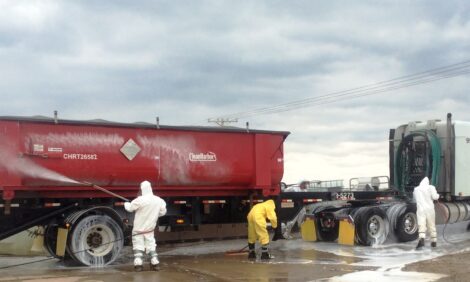



Impact of sow vaccination on piglet performance during lactation
A research group from Carroll shows there are safety concerns when vaccinating during lactation.Introduction
The optimum vaccination plan for sows against Parvovirus, Erysipelas and Leptospira is during lactation, thus preventing future infections during pregnancy. Furthermore, the use of reproductive vaccines is common on most pig farms around the world due to the high prevalence of these pathogens amongst swine herds.1,2
The humoral immune response and difference in safety between commercial reproductive vaccines has already been reported,3,4 but the impact that these could have on sow feed intake, milk production and piglet performance up to weaning is still being evaluated.
The aim of this study was to compare how the difference in safety between two reproductive vaccines can affect the production performance of sows and piglets during lactation period.
Materials and methods
This study was conducted in a swine herd of 4,800 sows in Mexico, operating on a one-week batch system, with approximately 240 farrows per batch. A total of 80 healthy multiparous sows from one batch were selected and randomly assigned to two groups (Group 1 [G1] and Group 2 [G2]) of 40 animals each. G1 was administered Vaccine A and G2 was administered ERYSENG® PARVO/LEPTO (HIPRA) by the intramuscular route (2 mL). Both vaccinations were performed 10 days after farrowing following the manufacturer’s instructions. Piglets from selected sows were individually identified with numbered ear tags and two different colours indicating the group they belonged to (891 piglets in total). Vaccine safety was measured indirectly through the absence/presence of fever (mean group rectal temperature [MRT] in °C) at vaccination (0 h), and 6, 12 and 24 hours post vaccination (hpv) (Figure 3). Sow feed intake was measured two days before vaccination (Day -2, -1), on vaccination day (Day 0) and three days after vaccination (Day +1, +2, +3). Piglets were weighed individually at farrowing day, at 9 days of age (one day before vaccine application) and at weaning (21 days of age).
Statistical analysis software (SAS) was used to check differences between the groups. Data are expressed as mean.
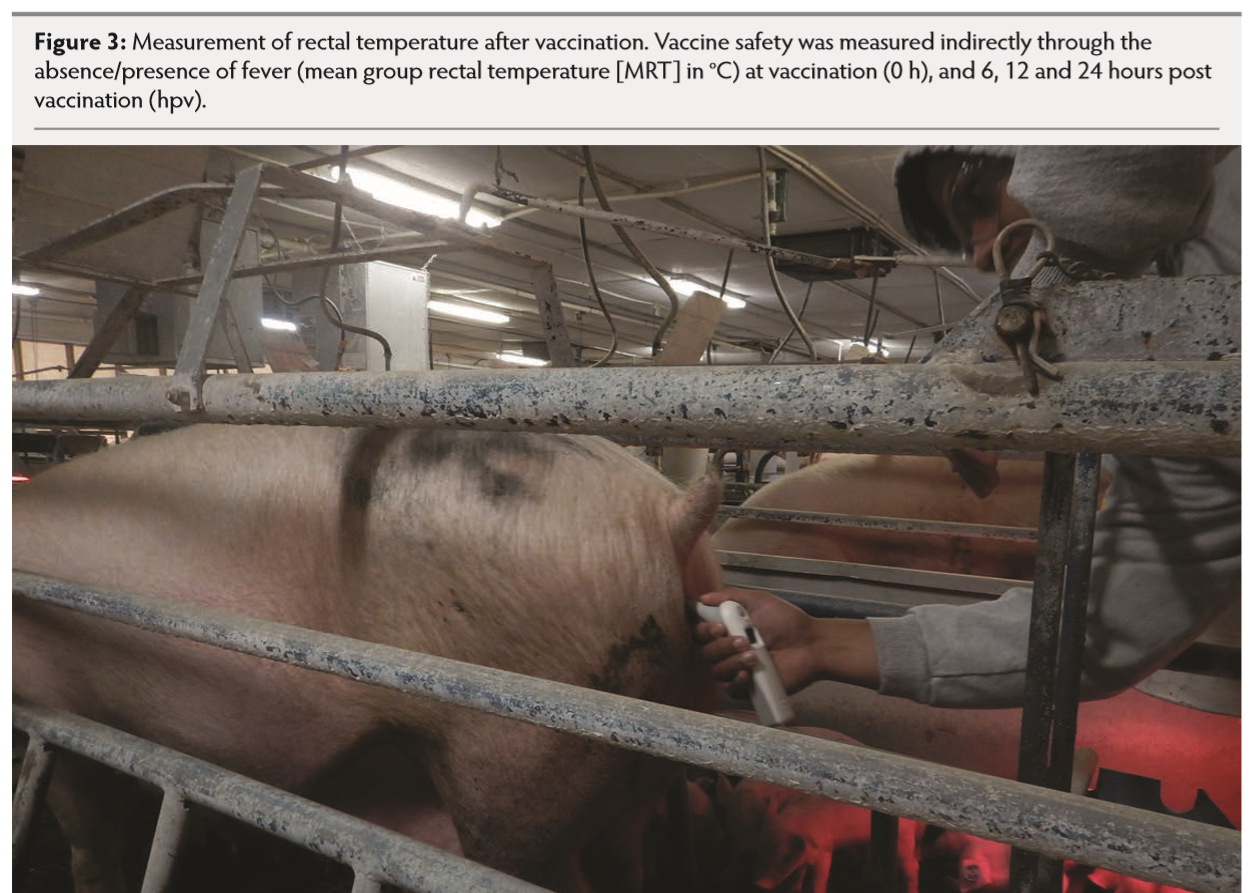
Results and discussion
Regarding the farrowing parameters, no statistically significant differences were observed between the experimental groups in terms of the number of piglets born alive, mean litter weight, mean body weight per piglet, number of piglets per litter at farrowing day (Table 1).
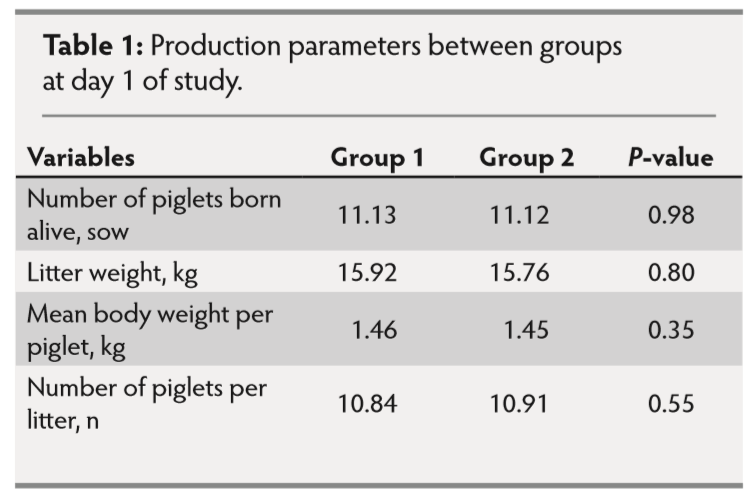
At Day 9 of the study, which was one day prior to vaccination, no statistically significant differences were observed between groups in terms of the number of piglets, litter weight, mean body weight per piglet, average daily gain, percentage mortality (Table 2) and mean feed intake per sow (Figure 2).


After vaccination, statistically significant differences were observed in MRT measured at 6 hpv (40.3 °C G1 vs. 39.5 °C G2) and 12 hpv (39.9 °C G1 vs 39.3 °C G2) between both groups (t-student test, P < 0.0001) (Figure 1).
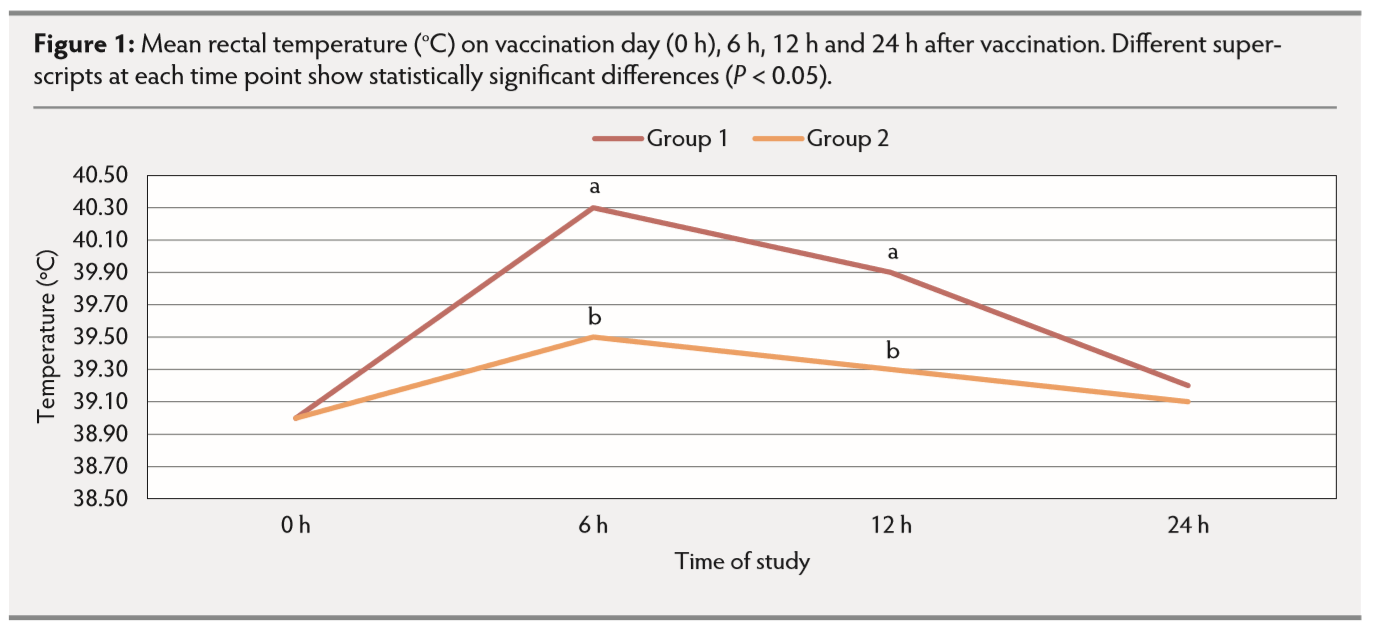
Furthermore, a statistically significant difference was also observed in mean feed intake per sow between the experimental groups (t-student test, P < 0.0001) (Figure 2). Thus, G2 consumed, on average, 1.4 kg more than G1 on vaccination day (6.7 kg/day G2 vs. 5.3 kg/day G1); the next day, G2 consumed 0.5 kg more than G1 (6.3 kg/day G2 vs. 5.8 kg/day G1); and two days after vaccination, G2 consumed 0.4 kg more than G1 (6.9 kg/day G2 vs. 6.5 kg/day G1) (Figure 2). Consequently, statistically significant differences were observed between groups in terms of mean body weight per piglet at weaning (Day 21 of study) and average daily gain between Days 9 and 21 (t-student test, P < 0.05) (Table 3).
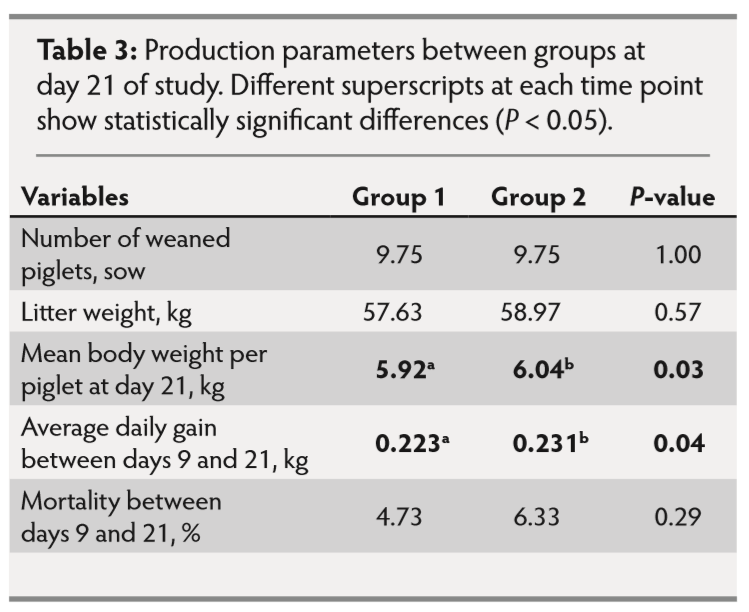
Conclusions
The present study was intended to explore differences in safety and the consequent impacts of different reproductive vaccines on sow and piglet performance during lactation. The results indicate safety concerns regarding the vaccine administered to G1 due to a significant increase in mean rectal temperature, which negatively affected sow feed intake during lactation. Reduced sow feed intake during lactation caused reduced milk production,5 which in turn, significantly affected piglet performance (mean body weight and average daily gain) up to weaning on G1.
Further studies should determine how the lack of safety of some reproductive vaccines could affect the reproductive performance of sows during subsequent insemination and gestation, since previous studies have already reported the negative impact of food restriction during lactation on ovarian development, as well as on ovulation rate and total number of piglets born.6
In future, reproductive vaccines should not only be evaluated by seroconversion of their respective antigens, but should also take into account safety issues that can negatively affect piglet and sow performance.
| References | ||||
|---|---|---|---|---|
| Adler, B. and De la Peña Moctezuma, A | ||||
| (2010) | Vet Microbiol. 140:292-4 | |||
| Mengeling, WL. et al. | ||||
| (1979) | Am J Vet Research. 40(2):204-7. | |||
| Boix, O. et al. | ||||
| (2017) | The Asian Pig Veterinary Society Congress. P 258. | |||
| Camprodon, A. et al | ||||
| (2017) | The Asian Pig Veterinary Society Congress. P 261 | |||
| Pluske, JR. et al. | ||||
| (1998) | Journal of Animal Science. 76:1165-71. | |||
| Quesnel, H. et al. | ||||
| (1998) | Journal of Animal Science. 76:856-63. |







